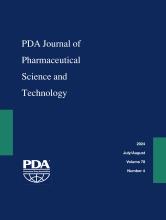Abstract
The following article analyses the excipients used in the parenteral formulations registered by the U.S. Food and Drug Administration (FDA) in the years 2011 and 2021. It adds real-word data for parenteral excipients in approved products from the New Zealand Medicines and Medical Devices Safety Authority (Medsafe) and the Irish Health Products Regulatory Authority (HPRA) in 2021. Maximum daily exposures (MDEs) for all parenteral excipients that had their amount listed either in the Medsafe or HPRA database are presented. Altogether, there were 355 excipients found in the parenteral dosage forms across all markets (US, New Zealand, and Ireland). Only 90 excipients (25.3%) were found in all three markets. In contrast, there were 187 (52.7%) excipients found in only one market. The MDE values of parenteral excipients from New Zealand and Ireland are frequently higher than the values found in the FDA inactive ingredients database (IID), adding important new information when the toxicity of these excipients is considered. There is a heterogenicity between the markets in use of parenteral excipients, with the US market leading in the number of total excipients as well as excipients present only in the US market. Nevertheless, there are several excipients not found in the US market that are registered in other markets. The comprehensive listing of parenteral excipients used worldwide presented in this article enables formulation scientists to quickly reference all potential parenteral excipients that are already proven safe and acceptable when designing a new parenteral formulation. Further, a list of new values for the MDE, often higher than those listed in the IID, provides important information for formulation scientists and toxicologists about the potential toxicity of these excipients.
- Excipients
- Parenteral excipients
- Maximum daily exposure
- Inactive ingredients
- Parenteral formulations
- Approved excipients
- MDE
- © PDA, Inc. 2024
PDA members receive access to all articles published in the current year and previous volume year. Institutional subscribers received access to all content. Log in below to receive access to this article if you are either of these.
If you are neither or you are a PDA member trying to access an article outside of your membership license, then you must purchase access to this article (below). If you do not have a username or password for JPST, you will be required to create an account prior to purchasing.
Full issue PDFs are for PDA members only.
Note to pda.org users
The PDA and PDA bookstore websites (www.pda.org and www.pda.org/bookstore) are separate websites from the PDA JPST website. When you first join PDA, your initial UserID and Password are sent to HighWirePress to create your PDA JPST account. Subsequent UserrID and Password changes required at the PDA websites will not pass on to PDA JPST and vice versa. If you forget your PDA JPST UserID and/or Password, you can request help to retrieve UserID and reset Password below.






